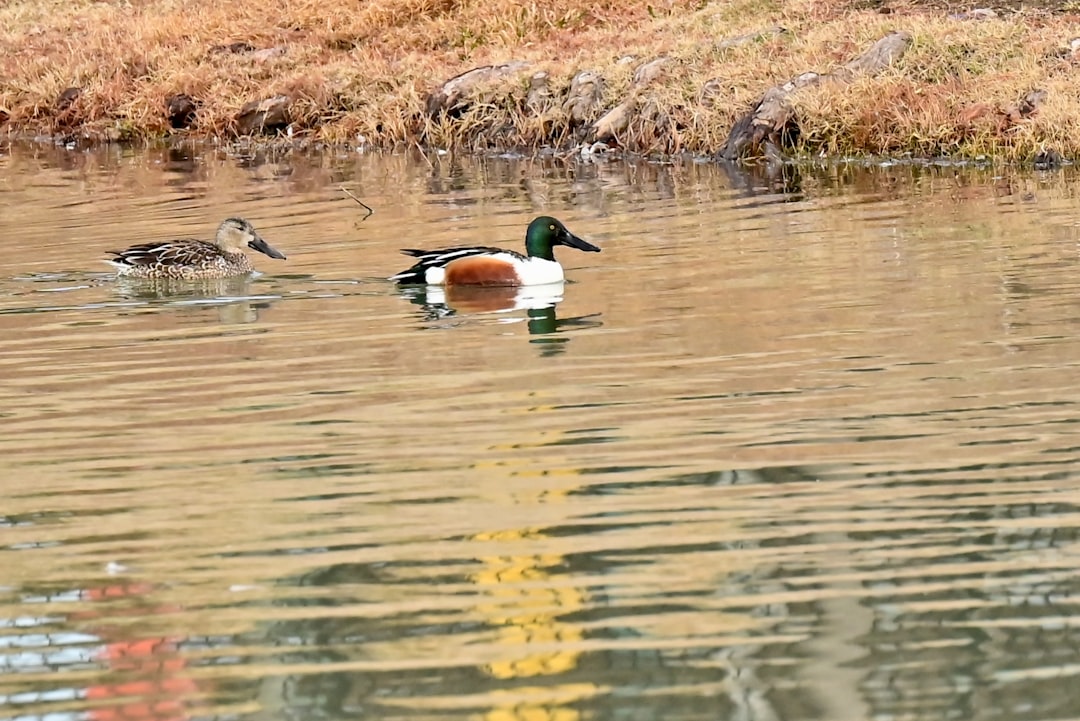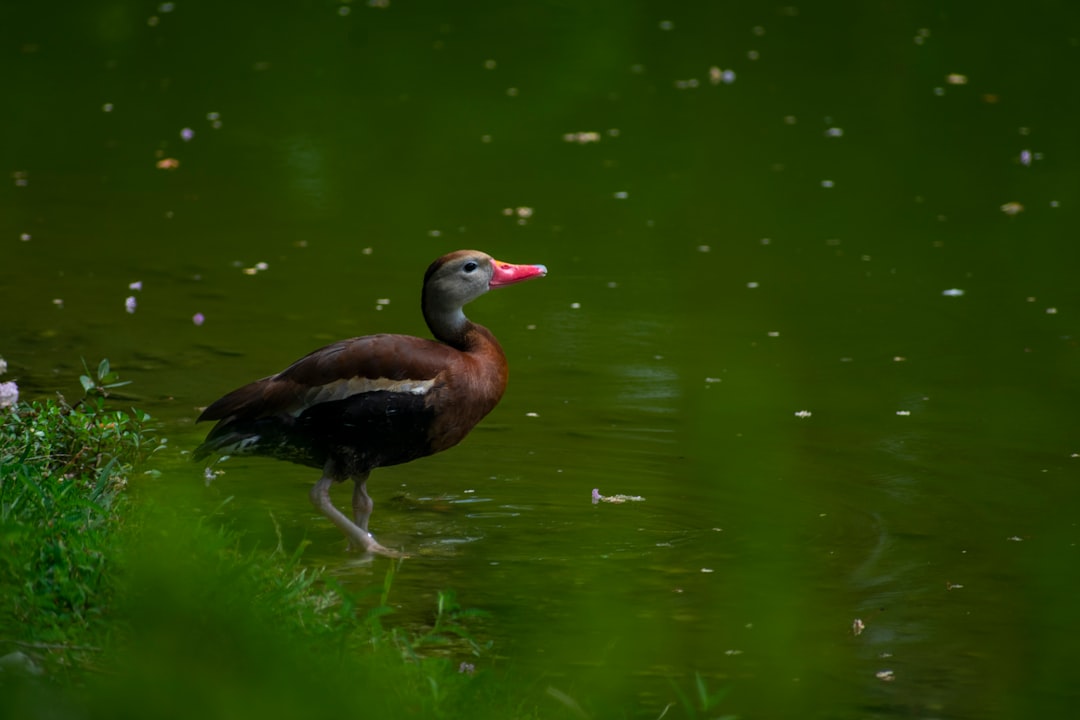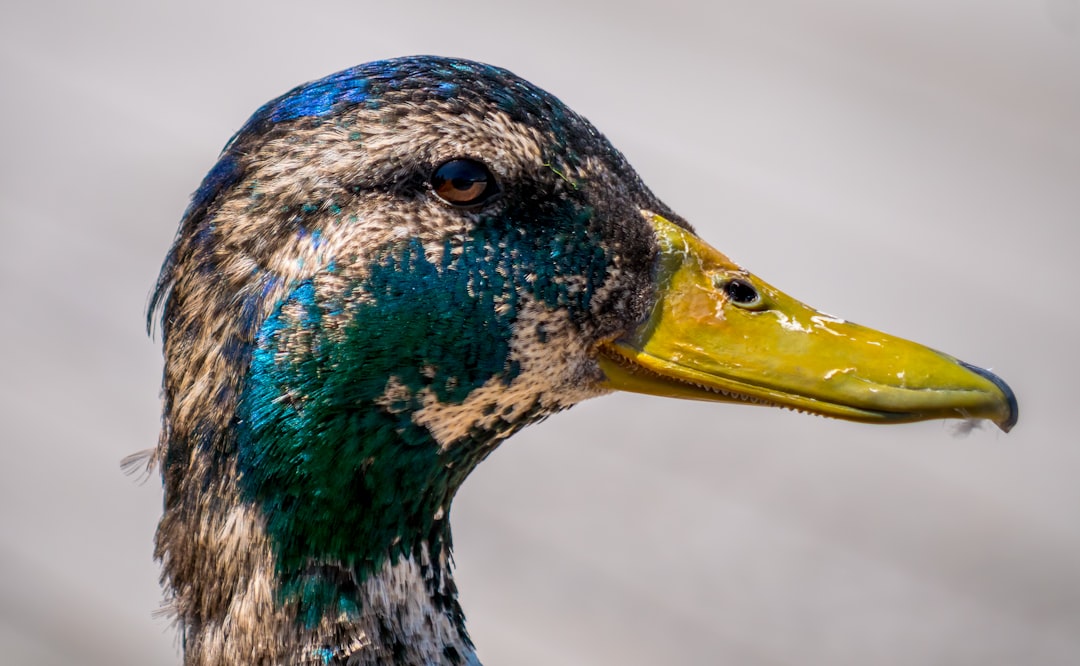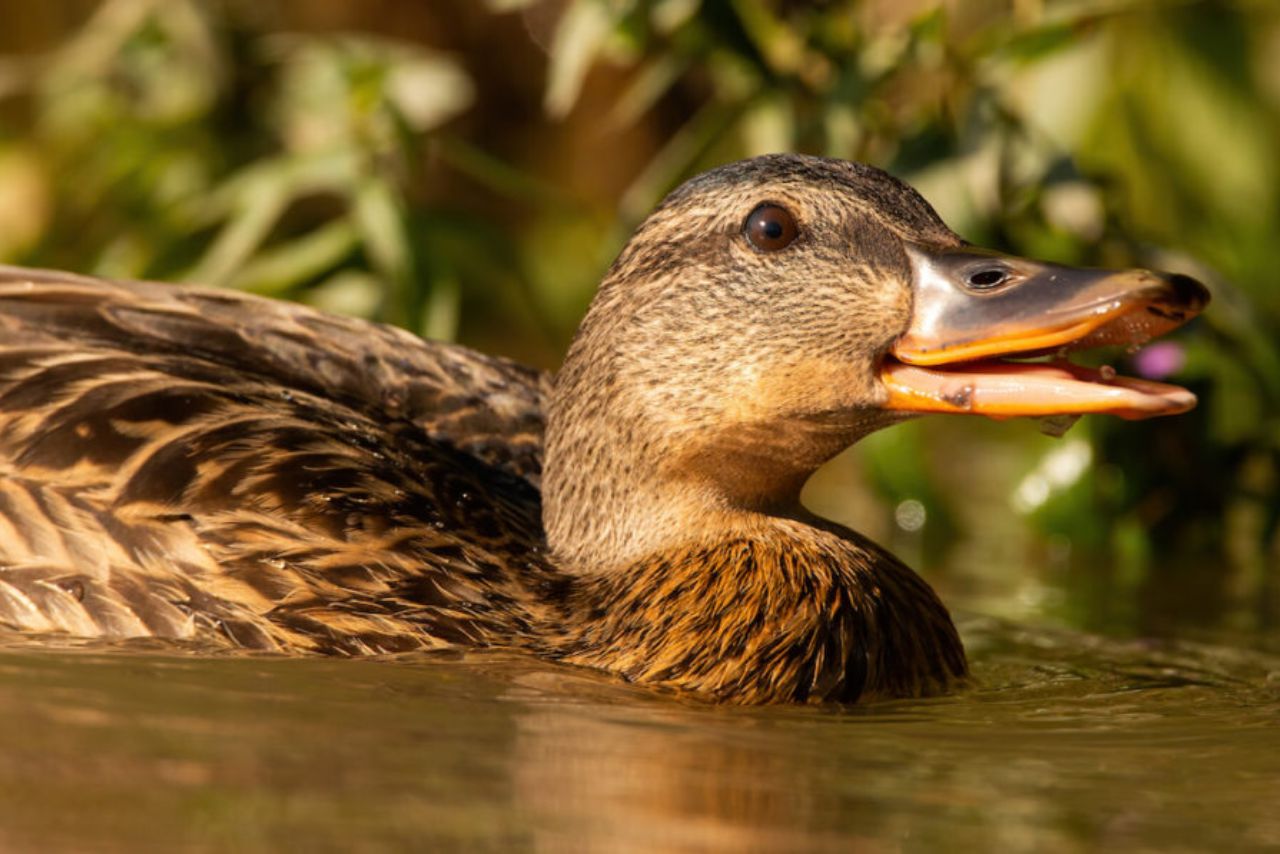Ducks can be found in various bodies of water around the world. They are known for their distinct quacking sound and their webbed feet, which make them excellent swimmers.
But have you ever wondered How Do Ducks Breathe? Unlike humans who use their lungs to inhale and exhale air, ducks have a unique respiratory system that allows them to breathe both in the air and underwater.
In this article, we will explore the anatomy of a duck’s respiratory system and how they are able to survive in different environments.
Ducks have a unique respiratory system that enables them to breathe both in the air and underwater. Their lungs are small and stiff, and they do not expand and contract like human lungs.
Instead, they have air sacs that allow them to store and circulate air throughout their body.
When a duck dives underwater, its nostrils close automatically, and it uses the oxygen stored in its air sacs to continue breathing.
As it resurfaces, it exhales the carbon dioxide from its air sacs and inhales fresh air.
Anatomy Of A Duck’s Respiratory System
A duck’s respiratory system is not only unique but also efficient. Their air sacs are connected to their lungs, which means that the oxygen they store can be circulated throughout their body without being mixed with carbon dioxide.
This allows ducks to have a constant supply of fresh oxygen, making it easier for them to fly at high altitudes or dive deep underwater.
In addition, ducks have a highly developed circulatory system that enables them to transport oxygen more efficiently than other birds.
How Does A Duck Respiratory System Work?
When a duck inhales, the air passes through its nostrils and into its trachea. From there, it moves into the posterior air sacs before entering the lungs.
When the duck exhales, the air leaves the lungs and goes into the anterior air sacs.
When the duck inhales again, this fresh air moves from the anterior sacs to the lungs while the stale air in the posterior sacs is expelled.
This efficient system allows ducks to extract more oxygen from each breath they take compared to other birds.
It also enables them to conserve energy while flying or diving underwater. In summary, a duck’s respiratory system is unique, complex, and highly efficient.
It is one of many adaptations that have allowed ducks to thrive in various environments around the world for millions of years.
Respiratory Cycle
The respiratory cycle of a duck is fascinating to watch. As it dives underwater, it closes its nostrils and uses the oxygen stored in its air sacs to continue breathing.
This allows ducks to stay submerged for several minutes without having to resurface for air.
Once it resurfaces, it exhales the carbon dioxide from its air sacs and inhales fresh air which is then circulated throughout its body.
Air Sacs
Ducks have nine air sacs, which are divided into two groups: anterior and posterior. The anterior air sacs are located in the chest area, while the posterior air sacs are located near the tail.
These sacs play a vital role in a duck’s respiratory system by allowing them to store and circulate air efficiently.
Lungs
A duck’s lungs are small and stiff, and they do not expand or contract like human lungs. Instead, they act as a filter that separates oxygen from the air and delivers it to the bloodstream.
The lungs also function as a storage unit for carbon dioxide, which is released during exhalation.
Unlike humans who can inhale and exhale in one breath, ducks require two full respiratory cycles to move air through their system.
Do Ducks Have Diaphragm?

Despite having a unique respiratory system, ducks do not have a diaphragm.
The diaphragm is a muscle that humans and some other mammals use to control their breathing by expanding and contracting the chest cavity.
Instead, ducks rely on their air sacs to circulate air throughout their body. This allows them to regulate their oxygen intake without the need for a diaphragm.
How Do Ducks Breathe While Flying?
Ducks are excellent flyers, and they use their unique respiratory system to breathe efficiently while flying.
As they take flight, ducks increase their metabolic rate, which means that they need more oxygen to sustain their flight.
To meet this demand, ducks have the ability to circulate air rapidly through their lungs and air sacs.
This allows them to extract more oxygen from each breath and deliver it to their muscles.
In addition, ducks have a highly efficient circulatory system that enables them to transport oxygen more effectively than other birds.
Their heart beats faster during flight, pumping fresh oxygenated blood throughout their body and removing carbon dioxide from their tissues.
Can Ducks Hold Their Breathe?

Ducks can hold their breath for several minutes while diving underwater.
This is due to their unique respiratory system that allows them to extract more oxygen from each breath and store it in their air sacs.
However, ducks cannot hold their breath indefinitely, and they need to resurface for fresh air eventually.
How Long Can Ducks Hold Their Breathe?
The duration of time a duck can hold its breath depends on various factors, such as the species of duck and the depth of the water they are diving in.
Generally, most ducks can hold their breath for up to 20-30 seconds while diving underwater.
However, some diving ducks like the Common Eider can hold their breath for up to five minutes!
It’s important to note that ducks have a higher tolerance for carbon dioxide, which allows them to stay submerged for longer periods without feeling discomfort.
How Do Ducks Breathe While Sleeping?
When ducks sleep, they do not shut down their respiratory system completely. Instead, they enter a state of rest where their metabolic rate decreases, and their oxygen demand reduces.
During this time, ducks continue to breathe at a slower rate while still circulating air through their lungs and air sacs.
This allows them to conserve energy while remaining alert to potential threats in their surroundings.
Where Do Ducks Breathe?
Ducks breathe through their nostrils, which are located on the top of their beaks. The nostrils lead to a short tube called the trachea, which connects to the lungs.
As air enters the trachea, it passes through a series of small tubes called bronchi and bronchioles that distribute air throughout the lungs and air sacs.
Where Are Ducks Lungs?
A duck’s lungs are located in the chest area, behind the heart. Unlike human lungs, a duck’s lungs are relatively small and do not take up much space in their body cavity.
However, their respiratory system is highly efficient and allows them to extract as much oxygen as possible from each breath.
How Many Times per Minute Do Ducks Breathe?
Ducks breathe at a slower rate than humans, taking only about 15-30 breaths per minute. However, their respiratory system is highly efficient and allows them to extract as much oxygen as possible from each breath.
The rate of breathing can also vary depending on the activity level and oxygen demand of the duck.
For example, during flight or diving, ducks may increase their breathing rate to meet their increased metabolic demands.
Do Ducks Breathe Through Their Beaks?

Ducks do not breathe through their beaks. Instead, they use their nostrils located on the top of their beaks to inhale and exhale air.
The beak is an important tool for ducks to gather food and manipulate objects in their environment, but it does not play a role in their respiratory system.
How Do Ducks Breathe In Water?
Ducks are able to breathe underwater by using their unique respiratory system and physical adaptations.
When diving, ducks close their nostrils and contract the muscles around their eyes to seal them shut, preventing water from entering.
They also reduce their heart rate and divert blood away from non-essential organs to conserve oxygen.
Once underwater, ducks use their air sacs to extract as much oxygen as possible from each breath and store it for later use.
As they resurface, they exhale the carbon dioxide that has built up in their air sacs and inhale fresh air through their nostrils.
Why Do Ducks Breathe Heavily?
Ducks may breathe heavily for a variety of reasons, such as during times of physical exertion or stress.
For example, if a duck is being chased by a predator, it may increase its breathing rate to provide more oxygen to its muscles and escape faster.
Additionally, ducks may breathe heavily during the breeding season when males are competing for mates or females are incubating eggs.
The increased metabolic demands of these activities require more oxygen and can cause ducks to breathe heavily.
How Do Ducks Breathe In The Egg?
Ducks do not breathe in the egg. While still developing inside the egg, ducks receive oxygen through tiny pores in the shell.
As they near hatching, they begin to take their first breaths of air using their respiratory system.
Once fully hatched, ducks are able to regulate their breathing and adapt to their environment using their unique respiratory system.
Do Ducks Need Ventilation?
Yes, ducks need ventilation to maintain a healthy respiratory system. Proper airflow is essential for removing excess moisture, dust, and harmful particles from the air that can irritate their lungs and air sacs.
Adequate ventilation also helps prevent the buildup of carbon dioxide in their environment, which can be harmful to their overall health.
Adaptations For High Altitude
Ducks have several adaptations that enable them to survive in high altitude environments where there is less oxygen available.
One such adaptation is their ability to increase their red blood cell count, which allows them to carry more oxygen in their bloodstream.
They also have a higher concentration of myoglobin, a protein that helps store oxygen in muscles, which allows them to maintain their physical activity at high altitudes.
Conclusion: How Do Ducks Breathe?
Overall, the respiratory system of ducks is highly efficient and well-adapted to a variety of environments and situations.
Whether on land or in water, ducks are able to extract as much oxygen as possible from each breath and regulate their breathing to meet their metabolic demands.
Proper ventilation is also essential for maintaining healthy lungs and air sacs.
Through physical adaptations such as increased red blood cell count and myoglobin concentration, ducks are even able to survive and thrive at high altitudes where there is less oxygen available.
The unique respiratory system of ducks truly sets them apart as one of the most adaptable bird species in the world.
FAQs
Do Ducks Breathe Through Their Beaks?
No, ducks breathe through their nostrils located on the top of their beaks.
How Do Ducks Breathe Underwater?
Ducks close their nostrils and contract the muscles around their eyes to seal them shut, then use their air sacs to extract as much oxygen as possible from each breath and store it for later use.
Why Do Ducks Breathe Heavily?
Ducks may breathe heavily during times of physical exertion or stress, such as when being chased by a predator or during the breeding season.
Do Ducks Need Ventilation?
Yes, ducks need proper ventilation to maintain a healthy respiratory system.
How Do Ducks Adapt to High Altitude Environments?
Ducks have adaptations such as increased red blood cell count and myoglobin concentration to allow them to survive and thrive in high altitude environments with less oxygen.




